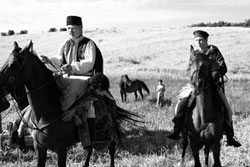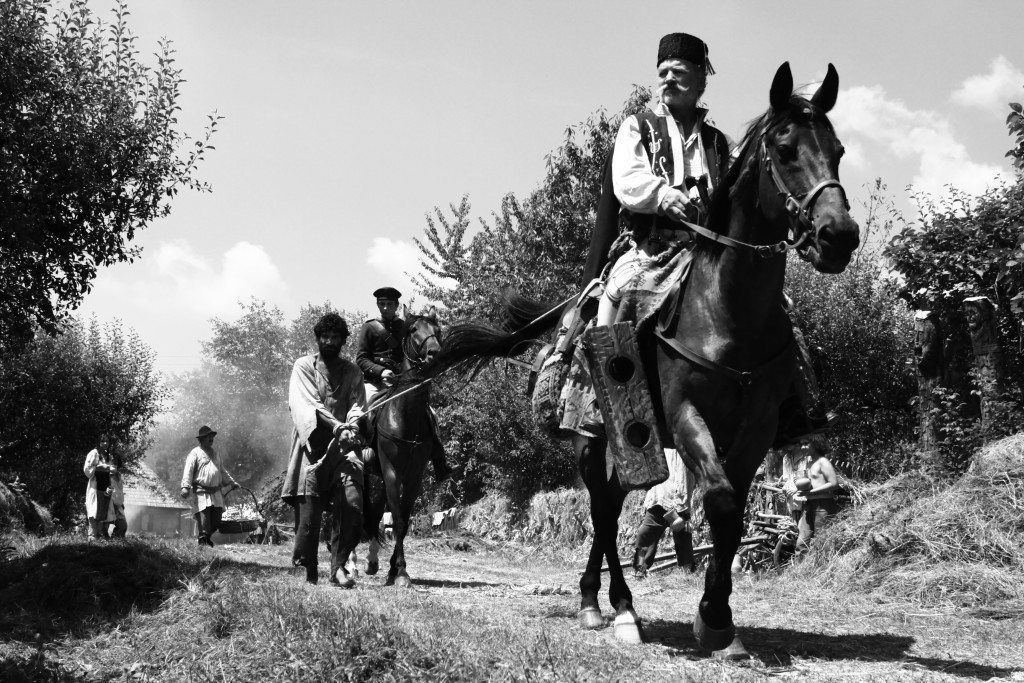?We live as we can, not as we want.?
Aferim! is set in 1835 in the Balkans. It is a time in which the structures of society were clearly stratified. Everybody had their place?and nearly all groups looked down on other groups. For filmmaker Radu Jude, this is an attempt to better understand modern day Romanian society by bringing into focus the history that people often overlook or even try to suppress.
It is a bit of a road trip film in which a constable, Constandin, has been dispatched by the local aristocrat to find and return a runaway Gypsy slave. As Constandin and his son travel to various areas, they have a series of encounters with different people: Christians and Jews, Russians and Turks, Romanians and Hungarians. Each group says terrible things about those not like them. A Christian priest is by far the most prejudiced against Gypsies and also heavily anti-Semitic. Even after the slave is found and brought back, we see the strictures of society continuing to play out in very unjust ways. Jude portrays all these various prejudices with humor through overstating them, but it is clear he expects his viewers to see and hear what is still being said more subtly today.
Constandin is a man in the middle of competing worldviews. On the one hand, he has been charged with maintaining the order of society. The slave (in more than just running away) has broken that order, and Constandin must bring him back to face the consequences?despite the fact that,?when he hears the slave?s story, he knows that it will not be justice. All along the way, as he and his son encounter so many people and ideas, it shows that change is in process, but he has been tasked with obstructing any change. He is at times somewhat philosophical about it all, but only on the level of aphorisms that often contradict each other.
While the near feudal aspects of that society may seem very different than our own past, it should be noted that, in the United States at that time, slavery was still in force. The Antebellum South was in some ways just as rigidly stratified as the culture we see in Aferim! And just as Jude looks back at where his society was nearly two centuries ago to get insight into where they are as a people today, we also sometimes look back at Western or Civil War epics to reflect beliefs and situations that continue on our time. It is important to understand that many of the issues that exist today are the results of ideas and actions from many years ago that continue to influence us for good or ill. It is only by such recognition that we can begin to bring the kinds of change that may be required to make a better world.
Photos courtesy Big World Pictures







